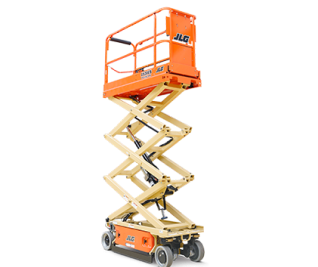Scissor lifts are a type of aerial work platform that operate on a series of crossed supports, which extend and compress in a scissor-like manner to raise and lower the platform vertically. They are commonly used in construction, maintenance, and warehouse operations for tasks that require workers to reach high places.
Scissor lifts are known for their stability and allow the operator to adjust height and also control their location while on top of the platform. They come in various sizes, from small, compact models for indoor use to larger, rough-terrain models for outdoor applications. Scissor lifts allow work to be safely performed at elevated heights where a ladder will not suffice.

